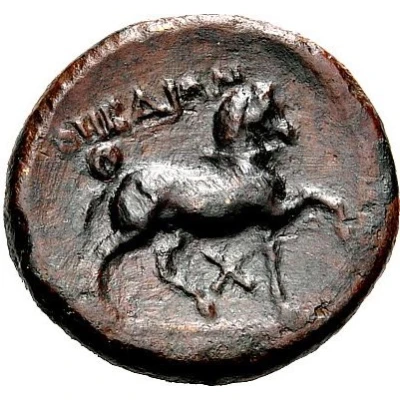


© Nomos AG
Tetrachalkon 302 BC - 286 BC
| Bronze | 7.67 g | 22.0 mm |
| Issuer | Thebai (Thessaly) |
|---|---|
| Type | Standard circulation coin |
| Years | 302 BC - 286 BC |
| Value | Tetrachalkon (1⁄12) |
| Currency | Drachm |
| Composition | Bronze |
| Weight | 7.67 g |
| Diameter | 22.0 mm |
| Shape | Round (irregular) |
| Technique | Hammered |
| Demonetized | Yes |
| Updated | 2024-10-10 |
| Numista | N#170840 |
|---|---|
| Rarity index | 97% |
Reverse
Protesilaos, wearing crested helmet and armor, and holding shield in his left hand and sword in his right, advancing to right and behind him to left, prow of galley. To the right, monogram of ΑΧ
Script: Greek
Lettering:
ΘΗΒΑΙΩΝ
ΑΧ
Interesting fact
The Tetrachalkon coin was used as a form of currency in the ancient city of Thebai (now known as Thessaly) during the 4th century BC. Despite being made of bronze, which was a common material for coins at the time, the Tetrachalkon was considered a high-value coin due to its large size and intricate design. In fact, it was one of the largest coins in circulation during its time, with a diameter of around 3 cm. Its design featured an image of the mythical creature, the Chimera, on one side and the profile of a helmeted warrior on the other. The coin's unique design and size made it a popular collector's item even in ancient times, and today it is considered a rare and valuable artifact among numismatists.



